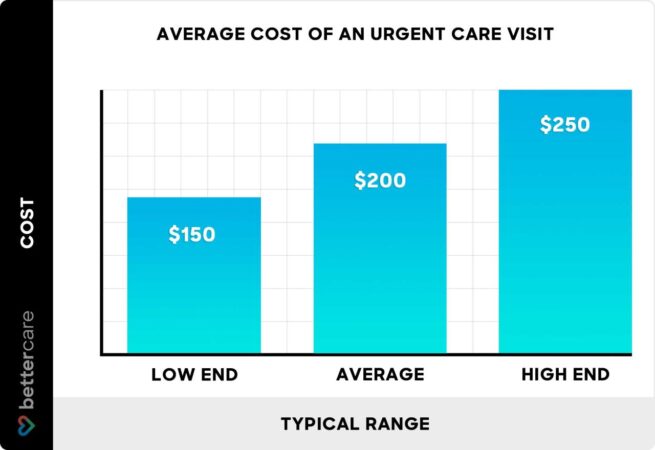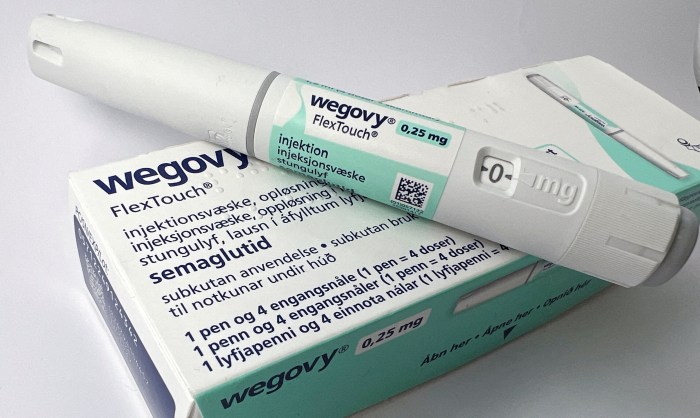
How to credential with insurance companies is a key step for any healthcare provider looking to get paid. It’s like getting a backstage pass to the world of insurance claims. You need to show them you’re legit, that you’ve got the skills and the credentials to deliver the goods, and that you’re ready to play by their rules. But don’t worry, we’re here to help you navigate this process and make sure you’re in the game.
This guide will walk you through the entire credentialing process, from understanding the requirements to maintaining your credentials. We’ll cover everything from the different types of credentials insurance companies require to the best practices for ensuring a smooth and successful credentialing experience. Think of it as your ultimate playbook for getting credentialed and ready to rock the insurance world.
Understanding Credentialing Requirements
Think of credentialing as the backstage pass for healthcare providers to get access to the insurance world. It’s like getting your VIP pass to see your favorite band—you need the right credentials to get in. But unlike concert tickets, credentialing is a long, sometimes complicated process.
Types of Credentials
Insurance companies require specific credentials to ensure healthcare providers are qualified to deliver care. These credentials are like the qualifications you’d check on a resume to determine if someone is the right fit for a job.
- License: This is the most basic requirement. It’s like your driver’s license—you need it to legally practice in your state. Think of it as your official permission slip to be a healthcare professional.
- Board Certification: This is like getting a college degree for your specialty. It shows you’ve passed a rigorous exam and are an expert in your field.
- DEA Number: This is like your “prescription writing permit.” It’s required if you prescribe controlled substances. It’s a special license that shows you’re qualified to handle those powerful meds.
- NPI Number: This is your unique identification number, like your social security number, but specifically for healthcare providers. It’s how you’re identified in the insurance world.
- CV: Your CV (Curriculum Vitae) is like your professional resume, detailing your education, experience, and skills. Think of it as a detailed overview of your career achievements.
- Professional Affiliations: This shows you’re a member of a professional organization, like joining a club for your field. It shows you’re committed to continuing your education and staying up-to-date on the latest developments.
Common Credentialing Documents
Here are some common documents you’ll need to provide during the credentialing process. Think of these as the essential paperwork you need to submit your application.
- Application Form: This is the official form you fill out to apply for credentialing with an insurance company. It’s like your job application, but for healthcare providers.
- License Verification: This document confirms your license is valid and in good standing. It’s like a background check to ensure you’re legally allowed to practice.
- Board Certification Verification: This document confirms your board certification is valid and in good standing. It’s like showing your college diploma to prove you’ve got the right qualifications.
- DEA Number Verification: This document confirms your DEA number is valid and in good standing. It’s like showing your “prescription writing permit” to ensure you’re authorized to handle controlled substances.
- NPI Number Verification: This document confirms your NPI number is accurate and matches your information. It’s like verifying your social security number to ensure you’re who you say you are.
- CV: Your CV is a crucial document for showcasing your experience and qualifications. Think of it as your “professional resume” that provides a detailed overview of your career achievements.
- Professional Affiliations Verification: This document confirms your membership in professional organizations is current. It’s like showing you’re a member of a professional club, demonstrating your commitment to staying up-to-date in your field.
- Medical Malpractice Insurance: This shows you have insurance to protect you from claims of negligence. It’s like getting car insurance—it’s a safety net to protect you in case something goes wrong.
Purpose of Credentialing
Credentialing is a vital part of the insurance industry, like the gatekeeper that ensures only qualified providers can access patients’ insurance benefits. Here’s why it’s so important:
- Quality Assurance: Credentialing helps ensure that healthcare providers meet certain standards and are qualified to provide care. It’s like a quality control process to ensure you’re getting the best possible care.
- Fraud Prevention: Credentialing helps prevent fraud by verifying the identities of providers and ensuring they’re authorized to practice. It’s like a security system to protect the insurance industry from scammers.
- Patient Protection: Credentialing helps protect patients by ensuring they’re receiving care from qualified providers. It’s like a safety net to ensure you’re getting the right care from the right people.
- Streamlined Claims Processing: Credentialing helps streamline claims processing by ensuring that providers are properly identified and authorized to receive payment. It’s like having a smooth checkout process, so you get paid for your services without any hiccups.
The Credentialing Process

Alright, so you’ve got your ducks in a row when it comes to understanding what insurance companies need from you. Now, let’s dive into the actual process of getting credentialed. Think of it like applying for a job, but instead of impressing a boss, you’re impressing a whole bunch of insurance companies.
The Credentialing Process Explained
Credentialing is like a dance, a back-and-forth between you and the insurance company. It’s all about getting your information, qualifications, and credentials checked and approved. This ensures that you’re legit and ready to provide services to their members.
- Initial Application: The first step is to fill out an application. It’s like a dating profile for your practice, showcasing all your good stuff. This application will include all your personal information, your practice details, and your qualifications.
- Documentation Gathering: Get ready to gather your paperwork! This includes your license, certifications, malpractice insurance, and other relevant documents. Think of it like a binder full of your credentials, ready to impress the insurance company.
- Provider Enrollment: Once you’ve submitted your application and documentation, the insurance company will review everything. They’ll make sure you’re qualified, licensed, and ready to roll. This process can take a while, so be patient, like waiting for your favorite pizza to be delivered.
- Credentialing Committee Review: The insurance company’s credentialing committee will then review your application and documentation. They’ll make sure everything’s legit and up to snuff. It’s like a panel of experts checking your work, so make sure it’s top-notch.
- Provider Data Verification: The insurance company will verify all your information, like your license, education, and work history. They’ll check it all to make sure it’s accurate and up to date. It’s like a fact-check, ensuring everything’s legit.
- Notification: Once everything is approved, you’ll get a notification from the insurance company. You’re in! Now you can start providing services to their members. Think of it like getting the “thumbs up” from the insurance company, letting you know you’re good to go.
Essential Documents
Having all the right documents is crucial for a smooth credentialing process. It’s like having your passport ready for an international trip – you can’t go anywhere without it.
- Application: The application is the first step, like your boarding pass for the credentialing journey. It’s where you provide your personal information, practice details, and qualifications.
- License: Your license is your ticket to practice, so make sure it’s current and valid. It’s like your driver’s license – you can’t drive without it.
- Certifications: Any certifications you have are like your “badges of honor” – they show you’ve got the skills and knowledge to do the job. It’s like a stamp of approval from your profession.
- Malpractice Insurance: This insurance is like your safety net – it protects you from potential claims. It’s essential for credentialing, like having travel insurance for your trip.
- Curriculum Vitae (CV) or Resume: This document showcases your experience and qualifications. It’s like your resume – a summary of your career achievements.
- DEA Number (if applicable): If you prescribe controlled substances, you’ll need your DEA number. It’s like your special permit to handle certain medications.
- National Provider Identifier (NPI): This is your unique identification number for healthcare providers. It’s like your social security number for the healthcare world.
- State-Specific Requirements: Each state has its own specific requirements for credentialing. Make sure you check the requirements for the state you’re practicing in. It’s like having the right visa for your destination.
Provider Enrollment Platforms
Remember when enrolling with insurance companies was a paper-pushing nightmare? Well, say goodbye to that because the digital age has revolutionized the process! Now, we’ve got these slick online platforms that streamline the whole thing, making it easier for providers to get on board with different insurance companies.
Provider Enrollment Platforms Overview
Provider enrollment platforms are online systems that allow healthcare providers to submit their applications, manage their credentials, and track their progress through the enrollment process. These platforms are like a one-stop shop for everything you need to get credentialed with insurance companies.
Popular Provider Enrollment Platforms
Think of these platforms as your digital assistants, helping you navigate the often-complicated world of insurance credentialing. Here are some of the big players:
- Availity: Availity is a popular platform used by a wide range of insurance companies, offering a comprehensive suite of tools for provider enrollment, credentialing, and claim management. Think of it as the “all-in-one” solution. They’re like the Avengers of the provider enrollment world!
- EZ-Claim: EZ-Claim specializes in simplifying the enrollment process, particularly for smaller practices. They’re like the friendly neighborhood superheroes, helping out the smaller providers who might not have the resources to handle everything themselves.
- CAQH Pro: CAQH Pro is a non-profit organization that focuses on streamlining the credentialing process. They’re the “good guys” of the industry, making it easier for providers to get credentialed and for payers to access provider information.
- The CommonWell Health Alliance: CommonWell is a network of healthcare organizations that promotes the exchange of health information. They’re the “networkers” of the industry, connecting providers and payers through a secure platform.
Benefits of Using Online Enrollment Systems
So, why should you even consider using these platforms? Here’s the lowdown:
- Time-Saving: These platforms automate many of the tasks involved in the enrollment process, saving you precious time and effort. No more mountains of paperwork!
- Increased Efficiency: Online systems allow you to track your progress and manage your applications in real-time, making the whole process more efficient. Think of it like having a digital dashboard to keep track of everything.
- Improved Communication: Platforms often provide communication tools that allow you to interact with insurance companies directly, making it easier to get answers to your questions. No more playing phone tag!
- Reduced Errors: Online systems can help reduce errors by automating data entry and validation processes. Say goodbye to those pesky typos!
Maintaining Credentials
Think of credentialing like your favorite pair of jeans – they need a little TLC to stay in tip-top shape. Just like those jeans might need a button replaced or a hem fixed, your provider credentials need to be updated and re-verified to keep things running smoothly.
Credentialing Updates and Re-verification
Keeping your credentials in good standing is a must-have for any healthcare provider. It’s like having a VIP pass to the healthcare world – you need to make sure it’s up-to-date and valid. Here’s the lowdown on why you might need to update or re-verify your credentials:
- Changes in your personal information: Got a new address, phone number, or email? Let the insurance companies know! This ensures they can reach you with important updates or notifications.
- Changes in your professional licensure or certifications: Did you get a new license or renew an existing one? Make sure your credentials reflect the latest updates. This is a big deal, as insurance companies need to verify you’re qualified to provide care.
- Changes in your practice location or specialties: If you’re adding a new location or expanding your services, you’ll need to update your credentials to reflect these changes. It’s like adding a new venue to your tour – you need to let everyone know where you’ll be performing!
- Changes in insurance plan requirements: Insurance companies might change their credentialing requirements from time to time. It’s like a new dress code for the healthcare world. Stay informed about these changes to ensure you’re meeting the latest standards.
Staying Informed About Credentialing Changes
Staying in the loop about credentialing changes is crucial. It’s like being a member of a book club – you need to stay up-to-date on the latest releases. Here’s how to stay informed:
- Subscribe to insurance company newsletters: Most insurance companies offer newsletters or email updates that provide information about credentialing changes. It’s like getting a heads-up about upcoming concerts – you’ll know what’s happening before it’s too late!
- Attend credentialing webinars or conferences: These events provide valuable insights and updates from industry experts. Think of it like a backstage pass to the credentialing world – you’ll get the inside scoop on all the latest trends.
- Network with other healthcare providers: Sharing information with colleagues can be a great way to stay informed about credentialing changes. It’s like having a group chat with your fellow healthcare providers – you can share tips and advice to make sure everyone’s on the same page.
Tracking Credentialing Deadlines and Requirements
You know how it is – life gets busy, and deadlines can slip your mind. To avoid any credentialing mishaps, it’s important to have a system for tracking deadlines and requirements. Here are a few ways to stay on top of your credentialing game:
- Use a calendar or spreadsheet: Keep track of all your credentialing deadlines, including re-verification dates, insurance plan requirements, and any other important information. This is like having a personal assistant for your credentials – it helps you stay organized and avoid missing any deadlines.
- Set reminders: Use calendar alerts or email reminders to ensure you’re notified about upcoming deadlines. This is like having a friendly reminder from your favorite streaming service – it lets you know when your favorite show is about to start.
- Keep all credentialing documents organized: Having a dedicated folder or system for storing all your credentialing documents makes it easy to find what you need when you need it. Think of it like having a well-organized closet – you can easily find what you need without digging through a pile of clothes.
Challenges in Credentialing

Credentialing, the process of verifying a healthcare provider’s qualifications and ensuring they meet the standards of an insurance company, can be a real rollercoaster ride. Think of it like navigating a complex obstacle course. While the process is essential to ensuring patient safety and smooth claims processing, it’s not without its hurdles.
Common Challenges in Credentialing
The path to credentialing can be paved with various challenges, from paperwork nightmares to delays that feel like they’re straight out of a “Groundhog Day” loop.
- Paperwork Overload: Let’s be real, credentialing involves mountains of paperwork. Think of it like trying to decipher a stack of ancient scrolls. You’re dealing with applications, licenses, certifications, and more. One missing signature or misplaced document can throw everything off track.
- Complex Regulations: Each insurance company has its own set of rules and requirements. It’s like trying to learn a new language every time you apply to a different insurer. Navigating these regulations can be confusing and time-consuming.
- Processing Delays: Credentialing can be a slow process, with delays often occurring due to missing information, incomplete applications, or even just the sheer volume of applications. It can feel like you’re stuck in a waiting room with no end in sight.
- Communication Gaps: Clear communication between providers and insurance companies is key. But sometimes, things can get lost in translation, leading to misunderstandings and delays. Think of it like a game of telephone, where the message gets distorted along the way.
- Technology Issues: Credentialing involves a lot of online platforms and systems. Technical glitches, system outages, or even just the lack of tech-savvy can create roadblocks and slow down the process.
Strategies for Overcoming Challenges
Don’t let these challenges discourage you. There are strategies to navigate the credentialing landscape like a pro.
- Stay Organized: Get yourself a good filing system and keep track of all your documents. Think of it like organizing your wardrobe – you’ll find what you need faster and avoid unnecessary stress.
- Be Proactive: Don’t wait until the last minute to submit applications. Start early and give yourself plenty of time to gather all the necessary information. Remember, the early bird catches the worm.
- Communicate Effectively: Keep in touch with the insurance company and ask questions if you’re unsure about anything. Clear communication is your best friend.
- Utilize Technology: Take advantage of online platforms and resources to streamline the process. Think of it like using a GPS to navigate your way through the credentialing maze.
- Seek Support: Don’t be afraid to reach out for help. There are credentialing experts and consultants who can guide you through the process. Think of it like having a personal trainer for your credentialing journey.
Common Credentialing Errors and Their Consequences, How to credential with insurance companies
Mistakes happen, but in the world of credentialing, they can have serious consequences. Think of it like a game of Jenga – one wrong move can topple the whole tower.
- Incomplete Applications: Missing information or signatures can lead to delays and even rejection. It’s like trying to build a house without a foundation.
- Incorrect Data: Typos, outdated information, or inaccurate details can create confusion and lead to claim denials. It’s like trying to find your way with a faulty map.
- Late Submissions: Failing to meet deadlines can result in delayed payments or even denial of your application. It’s like missing your flight because you didn’t set your alarm.
- Failure to Update Credentials: Keeping your licenses and certifications up-to-date is crucial. Think of it like renewing your driver’s license – it’s essential for maintaining your credibility.
Best Practices for Credentialing
Navigating the world of insurance credentialing can feel like trying to solve a Rubik’s Cube, but don’t worry, we’ve got you covered. With some smart strategies and a sprinkle of patience, you can conquer this challenge and get paid for your services.
Streamline Your Credentialing Process
- Get organized: Think of your credentialing process as a well-organized game of Tetris. Keep all your paperwork in order, from your provider applications to your state licenses, so you can easily access what you need when you need it.
- Embrace technology: Forget about snail mail and fax machines, those are relics of the past. Use online credentialing platforms, they’re like the Uber of credentialing, fast and efficient.
- Know your deadlines: Deadlines are like the buzzer in a basketball game, you gotta hit them. Keep track of all your deadlines and submit your applications on time, every time.
- Don’t be afraid to ask for help: You’re not alone in this, so don’t be afraid to reach out to the insurance company’s credentialing staff if you have questions. They’re like the friendly neighborhood lifeguards, always ready to help.
Building Strong Relationships with Credentialing Staff
- Be proactive: Don’t wait for them to call, reach out to the credentialing staff regularly. Think of it like a friend you haven’t seen in a while, a little check-in goes a long way.
- Be responsive: Answer their questions promptly and accurately, like a contestant on Jeopardy, be quick and on point.
- Be polite and respectful: Always maintain a professional demeanor, even if you’re frustrated, treat them like you’d want to be treated.
- Be a good listener: Pay attention to their instructions and feedback, they’re the experts in this field.
Effective Communication Strategies
- Clear and concise communication: Use plain language, avoid medical jargon, keep your messages concise and to the point.
- Follow up regularly: Don’t be a ghost, follow up with the credentialing staff at least once a week.
- Document all communications: Keep track of all your emails, phone calls, and letters, just like a detective keeps a log.
- Be persistent: Don’t give up, keep pushing until you get the answers you need.
Concluding Remarks

So, you’ve got the credentials, you’ve navigated the process, and you’re ready to get paid. But remember, the credentialing journey doesn’t end there. It’s an ongoing process, and staying up-to-date on changes and requirements is key. Keep your eye on the ball, be proactive, and remember, you’re not alone. There are resources available to help you every step of the way. Now, go out there and crush it!
FAQ Insights: How To Credential With Insurance Companies
What happens if my credentials expire?
If your credentials expire, you may not be able to bill insurance companies for your services. This means you won’t get paid! It’s important to stay on top of your credentialing deadlines and renew them before they expire.
How long does the credentialing process take?
The credentialing process can take anywhere from a few weeks to several months. It depends on the insurance company and the complexity of your application. Be patient and keep track of your application’s progress.
What if I make a mistake on my credentialing application?
Mistakes happen! If you catch a mistake before submitting your application, correct it right away. If you discover an error after submitting your application, contact the insurance company’s credentialing department as soon as possible. They may be able to help you fix the issue.




